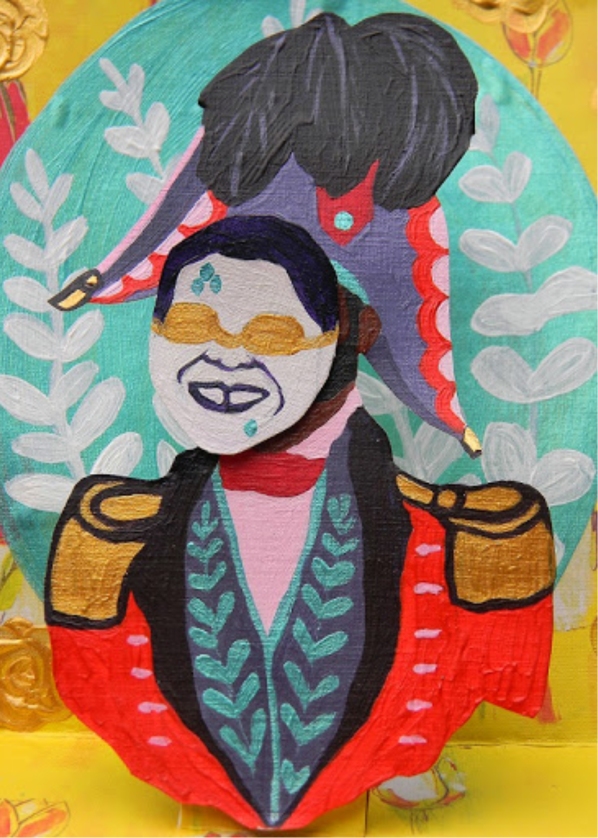As I have walked by the studio space of Haitian artist Tessa Mars over the last few days, I have watched a series of tentacle-like sculptures made from chicken wire materialize in its door frame. They resemble dangling metal sea anemones, although they are actually representations of inverted cacti, a dialogue Mars has begun with both the Aruban landscape and the network of roots that branch out across the Caribbean from her own home country.
Haitians are a presence in Aruba as they are in so many places. The most obvious manifestation of this presence for Mars is the bond she has developed with Dieunie, a Haitian woman who works at Ateliers ’89.
“We speak kreyòl, we connect and share, and I ponder on how to tell of this connectedness in my work,” Mars says of her interactions with Dieunie. “Haitians before me have weathered this foreign country and survived. This land is known to us.”
One of the things I’ve enjoyed observing during my weeks at Caribbean Linked IV is the wide variety of ways that the residents approach nationality in their practice and their ways of relating to the world. For some, the inevitable label of being an artist from a particular nation, or even the Caribbean region as a whole, is a trap to be nimbly avoided. Others see their national histories and heritages as fertile territory for creative exploration.
Mars, who speaks of a deep interest in Haitiana, is clearly in the latter camp. The national symbology of the Haitian republic is old, both in relationship to the many young nation-states in the Caribbean region, and to the concept of the republic in general. The upside of this, if one is interested in such things, is that the gravity of tradition is packaged with the national visual language. The downside is that the perceptions that form around nationhood have had plenty of time to calcify into stereotype.

Tessa Mars, Pop up Haitian hero – I am Tessalines, Mixed media on paper 29.7 x 21 cm, 2015.
A sense of whimsy in Mars’ paintings serves her well in avoiding the pitfalls that can come with representation of the national. So does her inclination towards naked (in the literal sense) vulnerability when it comes to her introduction of self-representation into these works. In 2015, Mars created an alter-ego that has since appeared frequently in her work, a revolutionary figure named Tessalines (after Jean-Jacques Dessalines). The idea for Tessalines was born when Mars, interested in ideas of what it would mean in today’s context to be a Haitian hero, created a pop-up card of Dessalines in which she placed her own face over that of the revolutionary leader. The artist later created a backstory for Tessalines — an overcoming of the trauma of sexual violence — that she depicted in a harrowing but ultimately uplifting series of paintings.
Tessalines’ journey to Trinidad was portrayed in works created during Mars’s recent residency at Alice Yard in Port of Spain, and now Tessalines has arrived in Aruba with all her symbols of spirituality, Haitian history and revolution in tow. Mars said she wants to work on conceptualizing ways to physically embody Tessalines, adding another dimension to the brightly-colored, graphic works in which she appears. But this may require additional meditation beyond her Caribbean Linked IV residency. For now, there are the abundant fields of cacti to consider, and the possibility of their reference to Mars’s rhizomatic connection to Haitians across Aruba. There is the arrival of Tessalines in a strange new landscape full of strange new objects. There is the welcoming warmth of her sorority with Dieunie at Ateliers ‘89.

Tessa Mars, We Are Here I, II & III, Acrylic on canvas, 30cm x 40cm each, 2016.



